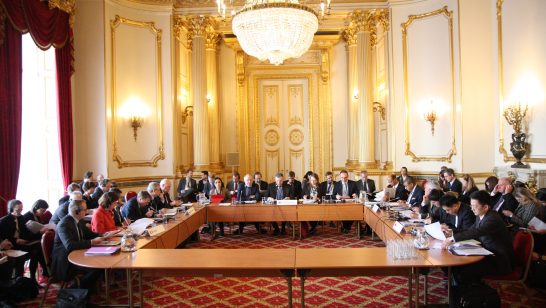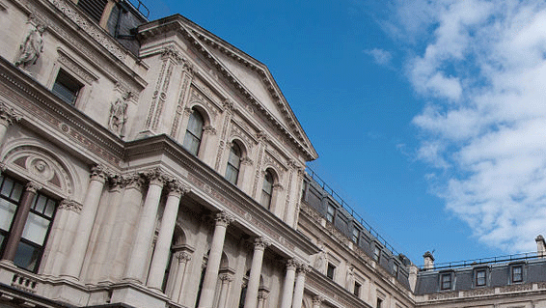
The clock struck 8:15 am. Life has a tendency to change fast, but at that moment, for the people of the city, life changed in an instant. A blinding flash, unleashing but a fraction of the power of the sun onto tens of thousands of unsuspecting people, followed by ear-splitting thunder that few could hear. Shards of glass spinning through the air, slicing and cutting human flesh. Anything that could burn violently set ablaze for a short while, until a wall of pressured air snuffed it out, crushing everything and everyone in its path. The clocks stopped telling time; they froze at that moment for eternity.
For the men, women and children of Hiroshima, the day started like any other. It was, according to those who survived, a still morning. The air was crisp and pleasant. There had been fog earlier, but it had lifted. It was just another day, the only distraction being a small formation of US planes crossing the sky, like little drops of silver. People made breakfast, travelled to work, went to school. They made plans. They argued, and they made up.
Less than a minute’s fall to Armageddon
It took 43 seconds for the bomb to fall from the Enola Gay’s cruising altitude, from thin air ten kilometres up to about 600 meters, the carefully calibrated detonation altitude. As the massive 4.5-tonne bomb fell, and Colonel Tibbets put his plane in a hard turn to get away from the shockwave, the crew counted away the seconds. Down below, the people of Hiroshima simply went on, not sensing death falling from above. You can do many things in 43 seconds. You can take a few breaths, put away dishes to dry, or perhaps lean back in satisfaction after breakfast. All of those actions were on borrowed time.
When the bomb reached 600 meters, the firing sequence started. At the back of the weapon, cordite ignited, the pressure pushed an assembly of projectile rings made out of enriched uranium closer and closer towards a set of targets made of the same heavy metal. As the projectile slammed into the Tungsten-Carbide tamper-plug and the impact-absorbing anvil at the end of the barrel, the two assemblies combined. For a moment in time physicists call a “shake,” about ten nanoseconds, far too short for human senses to register but a long time in the atomic world, the construction waited for the first neutron to spontaneously fire.
When it eventually fired, nature took over. As it slammed into a neighbouring uranium nucleus, it came apart, releasing more neutrons, slamming into more uranium. In a few nanoseconds, the chain reaction made heavy metal come apart. Less than a kilogram of the metal started to undergo fission, and less than a teaspoon worth of material was transformed into energy: heat, shock and radiation.
In that one terrifying instant, a single bomb unleashed the equivalent of about six-tenths of the 24,000 tonnes of TNT it had taken the German Luftwaffe to deliver in 85 raids over London between September 1940 and May 1941. For the people of Hiroshima, it was like a giant meteor had collided with the Earth. By today’s atomic standards, this was a fairly insignificant explosion.
About 80,000 men, women and children were killed instantly at 8:15 am on that Monday morning, 6 August 1945. The exact number will never be known. Darkness, confusion, and scorching fire followed. The stricken people stumbled across a dark apocalyptic landscape, blinded and burned, already poisoned by radiation, seeking salvation but finding none. For them, that singular moment in time represented the end of the world.
Justifying the drop
Unbeknown to the victims, it was not the end of days, instead their suffering heralded the start of a new era. The world had changed, quite possibly forever. Four days later, after another bomb had levelled and burned Nagasaki, President Truman stopped the bombings, as the “thought of wiping out another 100,000 people was too horrible.” According to a diary entry, he could not stomach the killing of more children.
However, there was no need for further bloodshed. A few days later, on 14 August 1945, Emperor Hirohito’s divine voice, for the first time in history, could be heard on crackling Japanese airways. The Emperor, using honorific keigo language,announced: “should we continue to fight, it would not only result in an ultimate collapse and obliteration of the Japanese nation.” He continued, “but also it would lead to the total extinction of human civilisation. Such being the case, how are we to save the millions of our subjects, nor to atone ourselves before the hallowed spirits of our imperial ancestors?”
Today, 75 summers have passed since that fateful day. While it is tempting to pass summary judgement on generations past, and some do, it would not do justice to the moral complexity facing those making the decision. Most decision-makers contemplating the atomic bomb did not look forward to its use with “the happiness of an idiot child that has at last got hold of the matches,” as H.G. Wells describedone of the bombardiers in A World Set Free. Some might have.
Few displayed regret. To take one example of many, Winston Churchill wrote in his 1954 memoir Triumph and Tragedy: “I thought immediately myself of how the Japanese people, whose courage I had always admired, might find in the apparition of this almost supernatural weapon an excuse which would save their honour and release them from being killed to the last fighting man.” For statesmen like Winston Churchill, the destruction of Hiroshima was a necessary evil, required to end a war that had ravaged the world and killed tens of millions. Emperor Hirohito’s final message might have given him some sense of redemption.
Whatever motivations of men, the splitting of the atom changed the way we see the world. It opened up boundless possibilities, but also gave rise to new and previously unimaginable dangers. At the most basic level, the atomic age allowed the powers of humankind to inflict harm to increase exponentially, and this gave rise to pure, terrifying and entirely rational thoughts on deterrence. Others point out that the nature of humanity has remained unchanged – rationality is not always present. And indeed, as Churchill foresaw in his remarkable 1931 piece Fifty Years Hence, these powers of annihilation are now “in the hands of men altogether different from any by which human nature has been moulded.” Some say that atomic peace has lasted for 75 years. Others argue that peace has endured because of dumb luck.
Today’s imperative
Nuclear weapons are unrivalled in terms of its destructive power, and humankind is gripped by the thought that no-one would wittingly unleash its terror on an opponent. Deterrence theory has become a comfort blanket for national security thinkers, lulling them into a warm feeling that nuclear warfare deters from its conventional kind. The threat of obliteration is a necessary evil. As Kenneth Waltz put it in his article Nuclear Myths and Political Realities, atomic weapons are “a tremendous force for peace and afford nations that possess them the possibility of security at a reasonable cost.”
Recently, deterrence thinking has become more nuanced. Perhaps more unsettled. For instance, Christopher Ford arguesin his Conceptual Challenges to Nuclear Deterrence, written in 2011, that “tri-polar systems are much less stable than bipolar ones.” He remarks that “instability increases geometrically with each new addition to the game.” This should give pause for thought, yet Dr Ford is not prepared to question his faith in nuclear deterrence. As he puts it in the article: “Even if we believe in nuclear deterrence only in the same sense that Pascal famously suggested one should believe in God – that is, because the cost of doing so in error is lower than not doing so in error – I’d say that we have every reason to keep believing.”
It is a genuine and serious argument. However, even if you accept that nuclear weapons keep the peace, you would eventually have to ask yourself “what kind of peace do they keep and at what cost?” The world is no longer bipolar, and nine states are now, to use Dr Ford’s argument, “part of the game.” Now, if a game carries with it increasingly catastrophic risks the longer you play it, like an apocalyptic version of Russian roulette, it will make sense to stop playing. The game may also be inherently destabilising in other ways. It is not beyond imagination that atomic weapons may serve to uphold authoritarian regimes and allow them to expand with impunity.
Finally, the humanitarian imperative stands on its own. If you consult the testimonies of those that survived on the morning of 6 August 1945 and endured sickness and loss for decades after that, the human costs of deterrence failure are difficult to even comprehend. Jeffrey Lewis, when asked by Joshua Pollack why he used Hibakusha testimony to visualise his countrymen’s suffering in the concluding parts of his horrifying novel The 2020 Commission answered: “this could be your fate, too, if you don’t make different choices.”
Choices are difficult to make, in an environment where abolitionists are seen as a threat. The 2017 Treaty on the Prohibition of Nuclear Weapons have been violently opposed by weapons-possessing states. This is understandable if you believe that the Atomic Peace is worth preserving, despite the risks and the humanitarian imperatives.
However, there is a more fundamental lack of recognition that those that bring forth an abolitionist argument are not doing so because they aim to destroy the prospects of world peace, but because they aim to fulfil it. It is time to have a forthright debate about the true costs of the Atomic Peace, and about the choices of tomorrow.
The opinions articulated above represent the views of the author(s) and do not necessarily reflect the position of the European Leadership Network or any of its members. The ELN’s aim is to encourage debates that will help develop Europe’s capacity to address the pressing foreign, defence, and security policy challenges of our time.
Image: Wikimedia



